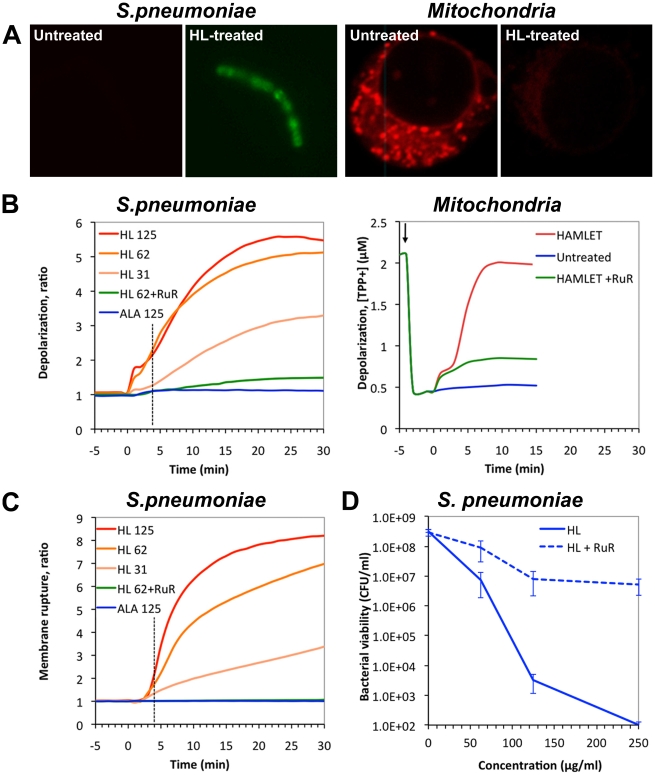Figure 6. Membrane depolarization and death induced by HAMLET in mitochondria and pneumococci.
A) Visualization of the membrane potential after HAMLET-treatment of bacteria and tumor cells for 30 minutes. Confocal micrographs depict untreated (left) and HAMLET-treated (right) S. pneumoniae AL2 bacteria (D39 Δ lytA) and A549 carcinoma cells. Bacterial membrane potential was visualized using the anionic bis-oxonol dye DiBAC4(3) that accumulates in depolarized bacteria and the tumor cell mitochondrial potential was visualized with the cationic dye TMRE that dissipates from depolarized mitochondria. Treatment of the cells with HAMLET resulted in dissipation of both the bacterial and mitochondrial membrane potential in tumor cells seen by an increased staining with DiBAC4(3) and a decreased staining with TMRE, respectively. B) Membrane potential and C) membrane rupture measurements in S. pneumoniae AL2 (D39 Δ lytA), or in isolated rat liver mitochondria. Bacterial membrane potential was monitored by the DiBAC4(3) and membrane rupture by an influx of propidium iodide, after treatment with 31 (HL31), 62 (HL62), or 125 (HL125) µg/ml HAMLET or 125 µg/ml ALA in the absence or presence of 30 µM Ruthenium Red (RuR). Each experiment was repeated six times and the data represents the mean ratio of the six experiments. Membrane potential in isolated mitochondria was measured by the distribution of TPP+ ions in the suspension in the presence of 40 nmoles of Ca2+ per mg protein after treatment with 50 µg/ml HAMLET in the presence or absence of 10 µM RuR. Arrow indicates addition of mitochondria. The experiment was repeated three times. The graph represents one of the three traces obtained. D) Effect of calcium transport inhibition on HAMLET-induced pneumococcal death. S. pneumoniae D39 was incubated with increasing concentrations of HAMLET in the presence or absence of 30 µM Ruthenium Red (hatched lines) and viability was monitored after 1 h of incubation by viable plate counts after overnight culture. Viability of bacteria is presented as colony forming units (CFUs) per ml suspension (detection limit in the assay was 102 CFU/ml). Ruthenium Red significantly reduced HAMLETs bactericidal activity. The data represent the mean of four individual experiments with standard deviation error bars.

